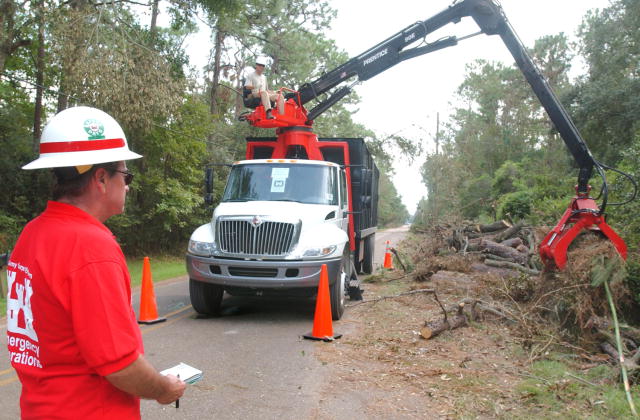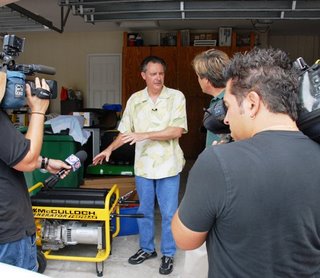Gustav Response and Recovery
Late yesterday I returned from Louisiana with President Bush, after having spent the past several days with Governor Jindal and his team as we monitored Gustav's arrival and initiated response and recovery efforts. I met with several parish presidents and first responders while I was there, and toured many of the communities that were hit hard by this storm. I can tell you that the men and women on the ground who are ensuring the safe return of millions of evacuees are going on little sleep and are working in difficult conditions, but are forging ahead with remarkable determination.
There is still flooding in some areas, and several downed trees and debris-littered roads; but the biggest challenge we're facing right now is downed power lines. State officials are working with FEMA and local power companies to repair these lines as quickly as possible, but it will clearly take several days until power is restored across the region.
I want to take a moment to specifically thank the parish presidents, state officials, and first responders who had a hand in coordinating an enormously successful evacuation prior to Gustav's landfall. As a result of their efforts, our search and rescue operations have been relatively minimal because most of the people in harm's way evacuated well before Gustav's arrival. I also want to thank everyone who assisted with what Governor Jindal described as the largest medical evacuation in their history. It was a true testament to the benefits of pre-planning and coordination, and is a model that should be repeated as we prepare for the oncoming storms currently gaining strength in the Atlantic.
As we identify additional challenges and focus on priorities such as medical needs, power restoration, and debris removal, it's important to recognize that this will be a long-term effort. While the initial planning, preparedness, and evacuation measures were well coordinated, we still have a great deal of work ahead of us. I encourage everyone along the Gulf Coast that is involved in this effort to apply the same vigor and focus on response and recovery as they did for pre-hurricane preparations.
Of course, we must also remain flexible and nimble – Hanna, Ike, and Josephine will present their own sets of challenges in the coming days, as will additional weather systems during this busy period of the 2008 hurricane season.
I encourage residents in Hanna's likely impact area to emulate what Louisianans have done by listening to local officials' instructions and preparing to sustain themselves for at least three days (please visit www.ready.gov for more information). I also encourage everyone to keep up the good work as we roll up our sleeves and continue to respond to this storm and prepare for those ahead.
Michael Chertoff
Labels: hurricanes, response and recovery









